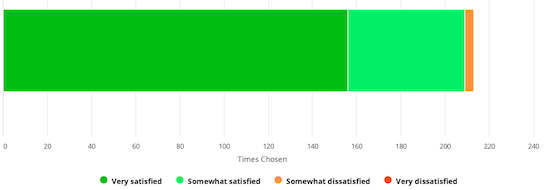
Last November, PeeringDB sought input from network operators, exchange operators, facility providers, content distributors and anyone else who uses their interconnection database. Here, they share the results.
PeeringDB is a freely available, user-maintained, database of networks, and the go-to location for interconnection data. The database facilitates the global interconnection of networks at Internet Exchange Points (IXPs), data centres, and other interconnection facilities, and is the first stop in making interconnection decisions.
Last November, we asked you for input through our anonymous satisfaction survey, so we could use it to guide our 2021 Product Roadmap. Today, we are sharing what you told us through the survey, and how we’ll be improving PeeringDB and your experience of it in 2021.
We had over 200 responses to the survey. Respondents identified themselves as connected with organizations operating on every continent and in every part of our industry. 99% of respondents described themselves as very or somewhat satisfied with PeeringDB overall.

When we asked about specific service categories, we were told that Network Configuration Data and Search and Discovery capabilities were the most important. These service categories had lower, though still high, levels of satisfaction, with 95% and 96% of respondents describing themselves as very, or somewhat, satisfied with these aspects of PeeringDB.
Although we saw higher satisfaction with the User Experience and Web Interface, at 97%, this service category had both the most responses and the most divided feedback. One user described the current web interface as ‘clean and simple‘ while others said it was ‘showing its age‘.
Documentation quality was also an area with lower specific satisfaction, at 93%. One comment homed in on a key problem, noting: “Needs a top-level overview document/intro. Or if it exists, I need to find it.“
We have used your feedback to guide our 2021 Product Roadmap. The four key focus areas will be:
- Improving geographic search
- Developing a structured framework for user documentation
- Improving the website’s responsiveness
- Introducing a communications framework to alert users to developments and support future tooling
Our first steps to accomplish this have been to add database support for coordinates of facilities. All new facilities will be located by their latitude and longitude, with street addresses as human-friendly search terms instead of authoritative data. This is a major project and we will share more on this work in a future blog post.
Another key change is the publication of our first HOW TO document. This document is designed to help new networks register with PeeringDB using our website. We will be publishing more documents in this series and developing a broader documentation framework to support API and web users equally.

If you have an idea to improve PeeringDB you can share it on our low traffic mailing lists or create an issue directly on GitHub. If you find a data quality issue, please let us know at support@peeringdb.com.
Leo Vegoda is developing PeeringDB’s Product Roadmap.
The views expressed by the authors of this blog are their own and do not necessarily reflect the views of APNIC. Please note a Code of Conduct applies to this blog.
